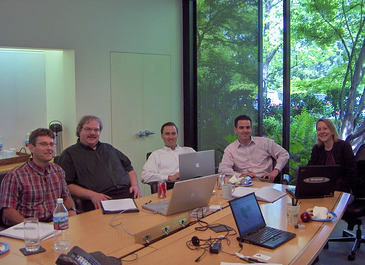|
Boston’s busiest tourist season is about to hit full swing. This year the hub is expecting tourists and convention attendees from all over the world, with the tourism board predicting we’ll top last year’s visits of more than 1.4 million people(1). More than 100,00 of those visitors hailed from Germany and another 100,000+ from China. With new non-stop flights from Shanghai, businesses can almost certainly expect an increase in Chinese visitors this summer—good news since the average Chinese tourist spends $5,400 per visit to the U.S., the highest spending average in the world(2).
Take advantage of the summer season and set yourself apart by marketing to tourists in their own languages. Place translated brochures in area hotels, use advertisements in local native language newspapers to reach tourists who are visiting their relatives, and put signage in major tourism languages in your retail locations. Based on last year’s tourist demographics, you may want to concentrate on German, Mandarin, French, Japanese, Italian, and Portuguese. When planning your marketing strategy, don’t neglect social media. Tweet, post to Instagram, Facebook, and other social media channels in the major tourism and international business visitor languages. It’s a great way to offer discounts, create buzz, and raise your profile. You can be sure they will be checking those sites while they’re in town. If your budget extends to it, it’s not too late to advertise your businesses in overseas markets, including Chinese social apps WeChat and Weibo, so that visitors already have your destination in mind when they arrive. Localization companies like Red & Blue can help you craft and execute a marketing strategy to successfully target foreign visitors in their languages. We provide expert advice, on-site interpreters, high-quality translation, and localized promotional videos in all in-demand languages. Contact us to talk about how you can attract this summer’s influx of international tourists to your business. 1. Mass Office of Travel and Tourism, 2014 Report 2. http://www.ibtimes.com/golden-week-tourism-chinese-tourists-spend-lavishly-top-restaurants-1696824
2 Comments
Meetings can be bad enough when everyone is in the same room, but when participants are scattered across the globe, they can be downright unbearable. From listening to people eat, to hearing people type, and to having to repeat information for those who checked-out part way through, we're all in need of ideas to improve distributed meetings.
1. Decrease the scheduling hassle. If your participants are scattered across time zones, it can be difficult to keep track of who's up and who's asleep. Timeanddate.com has a nifty color-coded tool that shows at a glance who's working and who's off. Red is for sleeping, green is for working, and yellow is for likely to be out of office. 2. Rotate the time. Often the person running the meeting sets the meeting time based on her schedule. This is great for the leader, but if you're based in Boston, for example, then your Beijing team is never going to be at it's best on the calls, and if the calls are frequent, they will also start getting grumpy. Switch the times up so everyone has an chance to be on the call during normal working hours. 3. Consider hiring interpreters. If your distributed team speaks English, but in a somewhat limited fashion, or you're holding an international meeting with a client, you might get better results if you involve an interpreter. Lots of companies waste time through simple misunderstandings. At one company I worked for, we thought out British team was on-board with our plans when they said they were "fine" with them. Turns out, "fine" meant not at all happy; we needed to strive for having the plans be "brilliant", and that conversation was all in English! Interpreters for conference calls don't have to be on site. They can call in from a separate location, which can reduce cost, since travel time and inconvenience won't be an issue. 4. Speak Slowly When people can't see you and cue off of your body language and your face while you speak, they have to rely solely on your voice. Also, they may be trying to participate using their second language. You need to make sure everyone on the call really slows down when they talk. They need to pause more frequently, and they need to ask more check-in questions as they go. This brings us to the next point... 5. Summarize More You can't see who has fallen asleep or has started to play a game on his lap top, so you need to ask dial-in attendees to summarize what they think they've heard and outline what their action steps are. Otherwise you're likely to get a lot of comments like "yes, we're good with that," when what they really mean is "hmmm...I have no idea what was just said." 6. Excellent Minutes Finally, you'll want to designate someone to be in charge of taking detailed, clear notes of the meeting and distributing them quickly afterwards. This will help clear up any lingering ambiguity. If you use a localization agency, it can be useful for you to have the notes translated, again to make sure that the meeting outcomes and action steps are as clear as possible. When is the last time you extracted information from Google Analytics about which global locations your website visitors came from? If you're only looking at webpage visits in aggregate, you're missing out on a wealth of information that can help you better target your customers.
1. Find out where your customers live. Are they all from the U.S. or do they come from all over the world? Click on a specific country to determine which region or cities your visitors live in. How do conversion rates differ across regions? Is there an opportunity to create a marketing campaign that targets a specific city, region or country? 2. Find out whisch languages your visitors speak. If your website is only in English, but you have a large number of French visitors, maybe it's time you invested in a French language site. If you have a high bounce rate, could that be the reason? 3. Learn more about visiting patterns. How do visitors from specific countries vary by new/return user rates? If you localize your site for a foreign market, how might you want to adapt your content based on those rates? Check out how users from different countries or cities flow through your site. What is similar and what's different? This is another chance to think about targeted marketing campaigns based on user interest/awareness. 4. How did your international users get to your site? Did they come directly, through a campaign, a local referral, or a search engine? Maybe you need to significantly increase your use of social media in a particular region or maybe you need different ad words. Thinking about usage patterns can help you be more creative about acquisition. 5. Use of multilingual sites If you determine that you need to localize your site for different regions, you should do a little research about how to best set up those sites so that Google indexes them properly. A quick cheat sheet can be found here: https://support.google.com/webmasters/answer/182192?hl=en The point is that by delving into the international data that Google Analytics provides, you can learn a huge amount about your visitors that can help you prioritize the localization of your site, improve the targeting of your marketing campaigns, and determine which local markets to put your advertising dollars in. If your company is like many, you have different people in charge of different marketing streams. A team for social media, one for print ads, one for online ads, and another couple for content creation. Or maybe you're at a smaller company where everyone is expected to contribute to blogs and Tweet out pithy statements. Whichever boat you're in, when pitching to international markets, you need to unite your teams and present a unified, localized front.
When companies split up their marketing streams, they can often keep on message for their domestic market where they have a well-defined target audience. But for companies looking to sell abroad or to niche communities within their domestic market, the messaging gets more difficult. Transcreation is a buzz word used in the localization industry. Essentially, it means that content created in one language needs to be almost re-written for a different language and culture. The essence of the content remains the same, but rather than doing a one-to-one literal translation, the meaning within the content is rendered more faithfully and more meaningfully into the target language. Companies with marketing stream silos often rely on one-off translations (or worse, poorly rendered machine translations) and don't give enough thought into how their messages are being received in the new language/culture. If your company markets to other cultures and or in other languages, be sure to have one person in charge of all messaging to that market, and consider enlisting a localization agency that can provide the relevant industry expertise. Voice-overs for podcasts or YouTube videos, scrutiny of video footage to ensure it resonates, localization of white papers to incorporate in-country terms, sales sheets that are redesigned to emphasize product attributes that are important to the local market are all aspects of how international marketing needs to step back and take a wider view of how to adapt the corporate messaging. Localization, if properly done, requires a holistic view of your entire marketing engine, and often a bottom-up redesign of your messaging to ensure you are reaching the market in a way that reflects your company's mission and that optimizes the aspects of your products and services that the local market most values. |
Author
Archives
March 2024
Categories
All
|
Photos from : : Ys [waiz] : :, bjahind, fabola, MattysFlicks, @sage_solar, LoS, Traducción e Interpretación, Kyle Taylor, Dream It. Do It., _gee_, keepitsurreal, One Way Stock, Airviewsphotos, GotCredit, efile989, Benoit cars, ** RCB **, stephiesal853, Francisco Anzola, Highways England, ITU Pictures, VIPevent, leoplus, Karsten Bitter, Jolante, jobstop11, Nguyen Vu Hung (vuhung), jurvetson, mikefats, YooSan, sandrafdzh, roland, mikecogh, y entonces, Donald Lee Pardue, Gatorgoon, daniel0685, BÜNDNIS 90/DIE GRÜNEN, rick, {Guerrilla Futures | Jason Tester}, mikecogh, markyharky, amslerPIX, jo.sau, IAEA Imagebank, lisa-skorpion, Toronto Public Library Special Collections, Wootang01





 RSS Feed
RSS Feed
